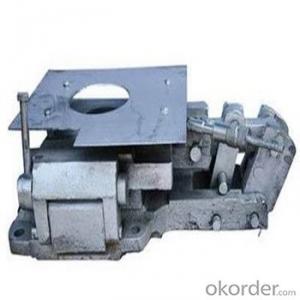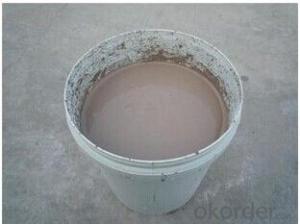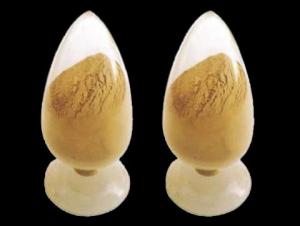Zirconia Slide Gate Nozzle Upper and Lower Nozzle Brick
- Loading Port:
- Shanghai
- Payment Terms:
- TT OR LC
- Min Order Qty:
- 100 m.t.
- Supply Capability:
- 100000 m.t./month
OKorder Service Pledge
OKorder Financial Service
You Might Also Like
Quick Details
Place of Origin: | Shandong, China (Mainland) | Shape: | Plate | Material: | SiC,Zirconia,corundum |
SiO2 Content (%): | 0.2 | Al2O3 Content (%): | 0.3 | MgO Content (%): | less |
CaO Content (%): | less | Refractoriness (Degree): | 1770°< Refractoriness< 2000° | CrO Content (%): | less |
SiC Content (%): | 7% | Model Number: | B60,B50,C40 | Brand Name: | Shikai |
Density: | 3.0g/cm3 | Al2O3: | 85% | Compressive strength: | 100Mpa |
Apparent Porosity: | 10% | Refractoriness: | more than 1790℃ | Advantage: | high refractoriness, good thermal shock resistance, erosion resistance |
Usage: | steel plant ladle and tundish | Packing: | carton,pallets | C+SiC: | 5% |
product: | slide gate,upper nozzle,lower nozzle |
Packaging & Delivery
Packaging Details: | cartons,plastic film and pallets,wooden box,As requested. |
Delivery Detail: | within 30days after get your order |
Ladle nozzle brick,upper nozzle brick,lower nozzle brick
Product information:
1.Advantage:high refractoriness, good thermal shock resistance, erosion resistance and
scouring resistance, small hole diameter change, long service life, etc.
2.Product data:
Burnt Slide gate
Item B60,B50,C40type | Al-C Slide Gate | Al-Zr-C Slide Gate | ||||||
AlC-70 | AlC -75 | AlC -80 | AlC-85 | AlC -86 | AlZrC -70 | AlZrC-75 | AlZrC -77 | |
Al2O3,% | 70 | 75 | 80 | 85 | 86 | 70 | 75 | 77 |
C+SiC,% | 7 | 7 | 5 | 5 | 4 | 7 | 7 | 7 |
ZrO2,% | - | - | - | - | - | 6 | 6 | 2.5 |
A.P.,% max | 10 | 10 | 10 | 10 | 7 | 10 | 10 | 10 |
B.D.,g/cm3 | 2.8 | 2.9 | 2.9 | 3.0 | 2.95 | 3.00 | 3.05 | 2.90 |
C.C.S., MPa min | 65 | 70 | 100 | 100 | 100 | 110 | 115 | 100 |
Unburned compound AlC Slide gate
Item B60,B50,C40type | Al-C Slide Gate | ||||
AlC-70A | AlC-75A | AlC-80A | AlC-85A | AlC-86A | |
Al2O3,% | 70 | 75 | 80 | 85 | 86 |
C,% | 7 | 7 | 5 | 5 | 4 |
A.P.,% max | 10 | 10 | 8 | 10 | 7 |
B.D. g/cm3 min | 2.8 | 2.9 | 3.0 | 3.0 | 2.95 |
C.C.S., MPa min | 65 | 70 | 100 | 100 | 100 |
zirconium core :
Item | ZN- 65 | ZN- 70 | ZN- 75 | ZN- 80 | ZN- 85 | ZN- 90 | ZN- 93A | ZN- 93B | ZN- 93C | ZN- 93D | ZN- 95A | ZN- 95B | ZN- 96 |
ZrO2(%) | ≥65 | ≥70 | ≥75 | ≥80 | ≥85 | ≥90 | ≥93 | ≥93 | ≥93 | ≥93 | ≥95 | ≥95 | ≥96 |
Bulk density (g/cm3) | ≥3.8 | ≥3.8 | ≥3.9 | ≥4.0 | ≥4.1 | ≥4.3 | ≥5.1 | ≥4.9 | ≥4.7 | ≥4.4 | ≥4.6 | ≥5.2 | ≥5.2 |
Apparent Porosity(%) | ≤23 | ≤22 | ≤22 | ≤20 | ≤20 | ≤20 | ≤13 | ≤15 | ≤18 | ≤20 | ≤20 | ≤9 | ≤5.6 |
Thermal shock resistance (cycles)(1100℃,water cooling) | >5 | >5 | >5 | >5 | >5 | >5 | >5 | >5 | >5 | >5 | >5 | >8 | >10 |
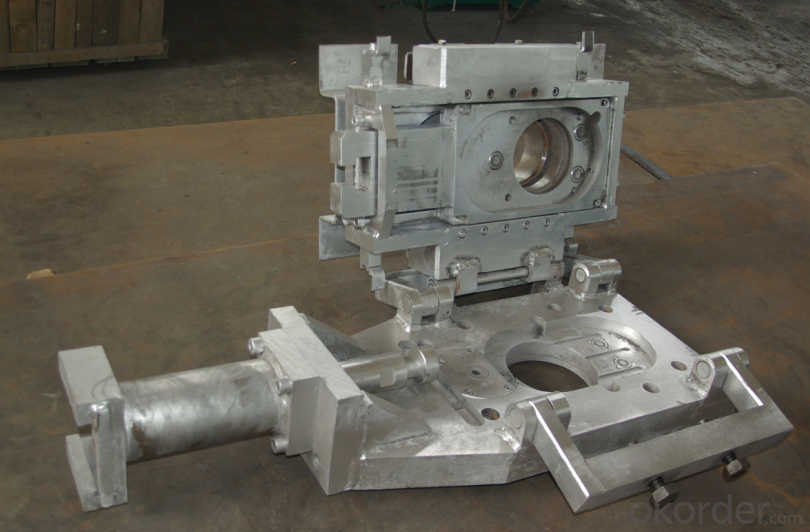
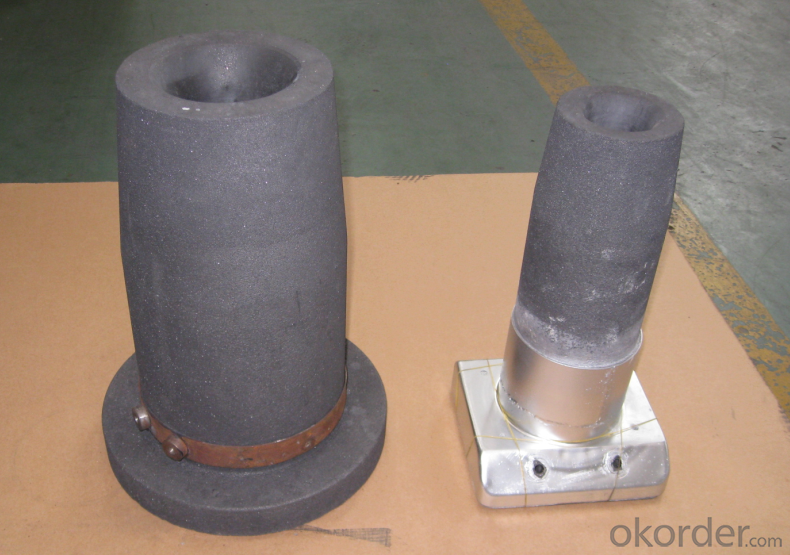
FAQ
We have organized several common questions for our clients,may help you sincerely:
①How about your company?
A world class manufacturer & supplier of castings forging in carbon steel and alloy steel,is one of the large-scale professional investment casting production bases in China,consisting of both casting foundry forging and machining factory. Annually more than 8000 tons Precision casting and forging parts are exported to markets in Europe,America and Japan. OEM casting and forging service available according to customer’s requirements.
②How to guarantee the quality of the products?
We have established the international advanced quality management system,every link from raw material to final product we have strict quality test;We resolutely put an end to unqualified products flowing into the market. At the same time, we will provide necessary follow-up service assurance.
- Q:How do monolithic refractories withstand the thermal cycling in aluminum smelting applications?
- Monolithic refractories have been specifically developed to endure the extreme thermal cycling conditions that arise in aluminum smelting applications. The exceptional properties of these refractories enable them to withstand the rapid and repetitive heating and cooling cycles without experiencing significant damage or failure. A key characteristic of monolithic refractories is their remarkable thermal shock resistance, which allows them to withstand sudden temperature changes without cracking or spalling. Throughout the aluminum smelting process, the refractories are exposed to extreme temperatures when molten aluminum is poured into the molds or when the molten metal comes into contact with the refractory lining. It is essential for the refractories to quickly absorb and dissipate heat to prevent any thermal shock damage. Furthermore, monolithic refractories possess a high thermal conductivity, which facilitates the efficient transfer of heat away from the refractory lining. This effectively reduces the risk of thermal stress and thermal fatigue. By dispersing the heat generated during the smelting process, the refractories minimize temperature variations within the lining, thereby preventing the occurrence of cracks or fractures. Moreover, monolithic refractories exhibit excellent chemical resistance, a crucial characteristic in aluminum smelting applications. These refractories are formulated to resist the corrosive effects of molten aluminum and other chemicals present in the smelting process. By offering resistance to chemical corrosion, the refractories help maintain the integrity of the refractory lining and extend its service life. Additionally, monolithic refractories are often reinforced with fibers or other structural materials to enhance their mechanical strength and durability. These reinforcements provide added resistance against mechanical stresses, such as thermal expansion and contraction, which arise during the thermal cycling process. In conclusion, the purpose of monolithic refractories is to withstand the thermal cycling conditions encountered in aluminum smelting applications. Their exceptional thermal shock resistance, high thermal conductivity, excellent chemical resistance, and enhanced mechanical strength enable them to endure extreme temperature fluctuations without experiencing significant damage. These refractories play a crucial role in maintaining the integrity and efficiency of the smelting process in the aluminum industry.
- Q:How are monolithic refractories different from conventional refractories?
- There are several ways in which monolithic refractories differ from conventional refractories. To begin with, conventional refractories are typically constructed using pre-formed shapes like bricks or tiles, whereas monolithic refractories are shapeless and can be installed through casting, gunning, or ramming. This allows for greater design and installation flexibility since monolithic refractories can be molded to fit any complex shape or size requirement. Additionally, monolithic refractories possess a higher level of thermal shock resistance compared to conventional refractories. This means that they can withstand rapid temperature changes without cracking or spalling. This characteristic is especially significant in applications where the refractory is exposed to extreme temperature fluctuations, such as in furnaces or kilns. Moreover, monolithic refractories exhibit superior corrosion resistance, making them more suitable for environments with acidic or alkaline conditions. They are also renowned for their exceptional mechanical strength and resistance to abrasion, making them ideal for situations where the refractory experiences high mechanical stress or wear. Lastly, monolithic refractories offer enhanced energy efficiency due to their lower thermal conductivity. Consequently, they can retain heat more effectively, resulting in reduced energy consumption and cost savings. In summary, the key distinctions between monolithic refractories and conventional refractories lie in their installation methods, thermal shock resistance, corrosion resistance, mechanical strength, and energy efficiency. These factors establish monolithic refractories as the preferred choice in numerous industrial applications where flexibility, durability, and performance are of utmost importance.
- Q:How long is the lifespan of monolithic refractories in iron and steel applications?
- The lifespan of monolithic refractories in iron and steel applications can vary depending on several factors such as the specific type of refractory material used, the operating conditions, and the maintenance practices. However, on average, monolithic refractories in iron and steel applications can last anywhere from a few months to several years.
- Q:How are monolithic refractories installed in iron and steel production processes?
- Monolithic refractories are installed in iron and steel production processes using various methods depending on the specific application and requirements. The installation process typically involves the following steps: 1. Surface Preparation: Before installing monolithic refractories, the surface where they will be applied must be properly prepared. This involves cleaning and removing any loose materials, dust, or contaminants from the substrate. 2. Mixing: Monolithic refractories consist of different materials such as aggregates, binders, and additives. These components are mixed in specific proportions to achieve the desired properties and consistency. The mixing process can be done manually or using mechanical mixers. 3. Application: There are different techniques for applying monolithic refractories, including gunning, casting, ramming, and troweling. The chosen method depends on factors such as the shape of the structure, accessibility, and required thickness. - Gunning: This method involves using a gunning machine to spray the refractory material onto the surface. It is commonly used to repair or patch existing linings or for rapid installation in areas that are difficult to access. - Casting: In casting, the refractory material is poured into molds or forms and left to set and harden. This method is suitable for creating complex shapes and large-sized components. - Ramming: Ramming involves manually or mechanically compacting the refractory material into a mold or form using a ramming tool. This technique is commonly used for lining induction furnaces, ladles, and other equipment. - Troweling: Troweling is a manual method where the refractory material is applied and smoothed using a trowel. It is often used for smaller repairs or touch-ups. 4. Curing: After the refractory material is applied, it needs to be cured to achieve its optimum strength and performance. Curing involves allowing the material to dry and harden at a controlled temperature and humidity for a specified period. This step is crucial to ensure the long-term durability and resistance of the monolithic refractory lining. Overall, the installation of monolithic refractories in iron and steel production processes requires careful preparation, proper mixing, and the appropriate application technique. It is essential to follow manufacturer guidelines and industry best practices to ensure a successful installation that meets the specific needs of the production process.
- Q:How are monolithic refractories different from traditional refractory materials?
- Monolithic refractories are different from traditional refractory materials in several ways. Firstly, while traditional refractory materials are typically made from bricks, blocks, or tiles, monolithic refractories are composed of a single, continuous material. This means that they do not have any joints or seams, which can be a weak point in traditional refractory structures. Secondly, monolithic refractories are much easier to install compared to traditional refractory materials. They can be easily shaped and applied in situ, allowing for greater flexibility in design and construction. In contrast, traditional refractory materials require skilled labor and more time-consuming installation methods such as bricklaying. Furthermore, monolithic refractories offer improved thermal shock resistance. Due to their continuous structure, they can better withstand sudden changes in temperature without cracking or spalling. Traditional refractory materials, on the other hand, may be more susceptible to thermal shock damage. Another advantage of monolithic refractories is their ability to provide better insulation. Their composition often includes lightweight aggregates or insulating fibers, which help to reduce heat loss and improve energy efficiency. Traditional refractory materials, while still capable of providing insulation, may not offer the same level of thermal efficiency. Lastly, monolithic refractories have the advantage of being more cost-effective. Their ease of installation, reduced labor requirements, and improved thermal performance contribute to lower overall project costs compared to traditional refractory materials. In summary, monolithic refractories differ from traditional refractory materials in terms of their continuous structure, ease of installation, improved thermal shock resistance, better insulation properties, and cost-effectiveness. These characteristics make them a preferred choice in many industries where high-temperature applications and thermal insulation are required.
- Q:What are the main factors affecting the abrasion resistance of monolithic refractories?
- There are three key aspects that categorize the main factors influencing the abrasion resistance of monolithic refractories: material composition, microstructure, and service conditions. Firstly, the abrasion resistance of monolithic refractories is significantly determined by their material composition. The selection of raw materials, such as aggregates and binders, directly impacts the overall hardness, strength, and wear resistance of the refractories. For example, high-alumina refractories, which have a high proportion of alumina as their main component, demonstrate exceptional abrasion resistance due to the hardness and toughness of alumina. Conversely, refractories with a higher percentage of softer materials like clay or magnesia may exhibit lower abrasion resistance. Secondly, the microstructure of monolithic refractories plays a crucial role in their ability to endure abrasion. The arrangement and orientation of the aggregates, as well as the bond strength between the particles and the matrix, significantly contribute to their resistance against wear. An evenly distributed and interconnected network of aggregates can strengthen the refractories and enhance their resistance to abrasion. Additionally, a compact and well-sintered matrix can prevent abrasive particles from penetrating, thereby reducing wear. Lastly, the service conditions under which monolithic refractories operate are vital factors in determining their abrasion resistance. Variables such as temperature, atmosphere, and mechanical stress can greatly impact the wear behavior of refractories. High temperatures can cause thermal expansion and contraction, resulting in cracks and spalling, which accelerate abrasion. The presence of corrosive gases or chemicals can also deteriorate the microstructure of refractories, diminishing their wear resistance. Moreover, mechanical stress from impact or friction can lead to localized wear and damage the refractories. To conclude, the abrasion resistance of monolithic refractories is influenced by material composition, microstructure, and service conditions. By carefully selecting suitable raw materials, optimizing the microstructure, and considering specific service conditions, it is possible to enhance the abrasion resistance of monolithic refractories and improve their overall performance in high-wear applications.
- Q:Can monolithic refractories be used for the lining of continuous casting tundishes and molds?
- Yes, monolithic refractories can be used for the lining of continuous casting tundishes and molds. Monolithic refractories are a type of refractory material that is composed of a single, homogeneous structure, in contrast to traditional refractories that are made up of multiple bricks or tiles. Monolithic refractories offer several advantages for lining tundishes and molds in continuous casting processes. Firstly, their monolithic nature allows for easy installation and repair, as they can be cast or gunned into place, eliminating the need for complex brickwork. This results in reduced downtime and increased productivity. Additionally, monolithic refractories have excellent thermal shock resistance, which is crucial for tundishes and molds that experience rapid and extreme temperature changes during the casting process. Their high thermal conductivity also ensures efficient heat transfer, promoting uniform cooling and solidification of the cast metal. Moreover, monolithic refractories offer good resistance to chemical attack, ensuring long-lasting performance even in the presence of molten metal and slag. They also have low porosity, preventing the penetration of metal and preventing the formation of cracks and spalling. Overall, monolithic refractories are a viable and effective choice for lining continuous casting tundishes and molds, providing superior performance, ease of installation, and durability in the demanding conditions of the casting process.
- Q:What are the considerations for repairing and relining monolithic refractories?
- When repairing and relining monolithic refractories, there are several key considerations that need to be taken into account. First and foremost, it is crucial to assess the extent of the damage or deterioration in order to determine the appropriate repair method. Factors such as the type of refractory material, the operating conditions, and the expected service life must be considered. Additionally, it is essential to select the right refractory material for the repair or relining process. This involves evaluating the temperature range, chemical resistance, thermal conductivity, and mechanical properties of the refractory material to ensure it is compatible with the specific application. Another important consideration is the proper preparation of the surface before applying the repair material. This may involve removing any loose or damaged refractory, cleaning the surface thoroughly, and creating a suitable bonding surface to ensure optimal adhesion. Furthermore, the application technique and curing process of the repair material should be carefully followed to achieve the desired performance and durability. This may involve proper mixing, application thickness, drying time, and temperature control. Lastly, it is crucial to conduct regular inspections and maintenance to identify any signs of deterioration or damage early on. This proactive approach will help prevent major repairs or relining in the future and prolong the overall lifespan of the monolithic refractories.
- Q:How do monolithic refractories resist high temperatures?
- Monolithic refractories, with their unique composition and structure, are specifically designed to withstand high temperatures. Unlike traditional refractory bricks, which are made up of multiple pieces, these refractories are created from a single material or piece. The primary factor contributing to the high temperature resistance of monolithic refractories is their elevated melting point. Materials such as alumina, silica, and magnesia, which have melting points ranging from 1650°C to 2000°C, are utilized in their production. This characteristic allows the refractories to endure extreme temperatures without experiencing significant deformation or melting. Moreover, monolithic refractories possess exceptional thermal stability. They exhibit low thermal conductivity, enabling them to effectively insulate against heat transfer. As a result, these refractories can maintain their structural integrity even when exposed to rapid temperature changes or thermal shocks. Furthermore, the monolithic nature of these refractories grants them enhanced resistance to thermal stress. Unlike traditional refractory bricks, they lack joints or seams that are susceptible to thermal expansion and contraction. Consequently, they exhibit greater resistance to cracking or spalling when subjected to high temperatures. Additionally, monolithic refractories have the ability to develop a protective layer or slag on their surface when exposed to elevated temperatures. This slag acts as a barrier, preventing direct contact between the refractory material and the hot gases or molten metals. Consequently, the risk of chemical reactions or corrosion is reduced. In conclusion, the combination of high melting point, thermal stability, resistance to thermal stress, and the capacity to form a protective slag makes monolithic refractories highly effective in withstanding high temperatures. They find wide applications in various industries, including steel, cement, glass, and petrochemical, where they encounter extreme heat conditions.
- Q:What are the key properties of pumpable refractories used for monolithic refractory applications?
- The key properties of pumpable refractories used for monolithic refractory applications include high flowability, good workability, excellent bonding strength, and high resistance to thermal shock. These pumpable refractories should also possess good pumpability and be able to withstand the intense heat and mechanical stress in the application environment. Additionally, they should have low water demand, high chemical resistance, and the ability to maintain their properties even after exposure to high temperatures.
1. Manufacturer Overview |
|
|---|---|
| Location | |
| Year Established | |
| Annual Output Value | |
| Main Markets | |
| Company Certifications | |
2. Manufacturer Certificates |
|
|---|---|
| a) Certification Name | |
| Range | |
| Reference | |
| Validity Period | |
3. Manufacturer Capability |
|
|---|---|
| a)Trade Capacity | |
| Nearest Port | |
| Export Percentage | |
| No.of Employees in Trade Department | |
| Language Spoken: | |
| b)Factory Information | |
| Factory Size: | |
| No. of Production Lines | |
| Contract Manufacturing | |
| Product Price Range | |
Send your message to us
Zirconia Slide Gate Nozzle Upper and Lower Nozzle Brick
- Loading Port:
- Shanghai
- Payment Terms:
- TT OR LC
- Min Order Qty:
- 100 m.t.
- Supply Capability:
- 100000 m.t./month
OKorder Service Pledge
OKorder Financial Service
Similar products
New products
Hot products
Related keywords
